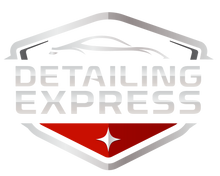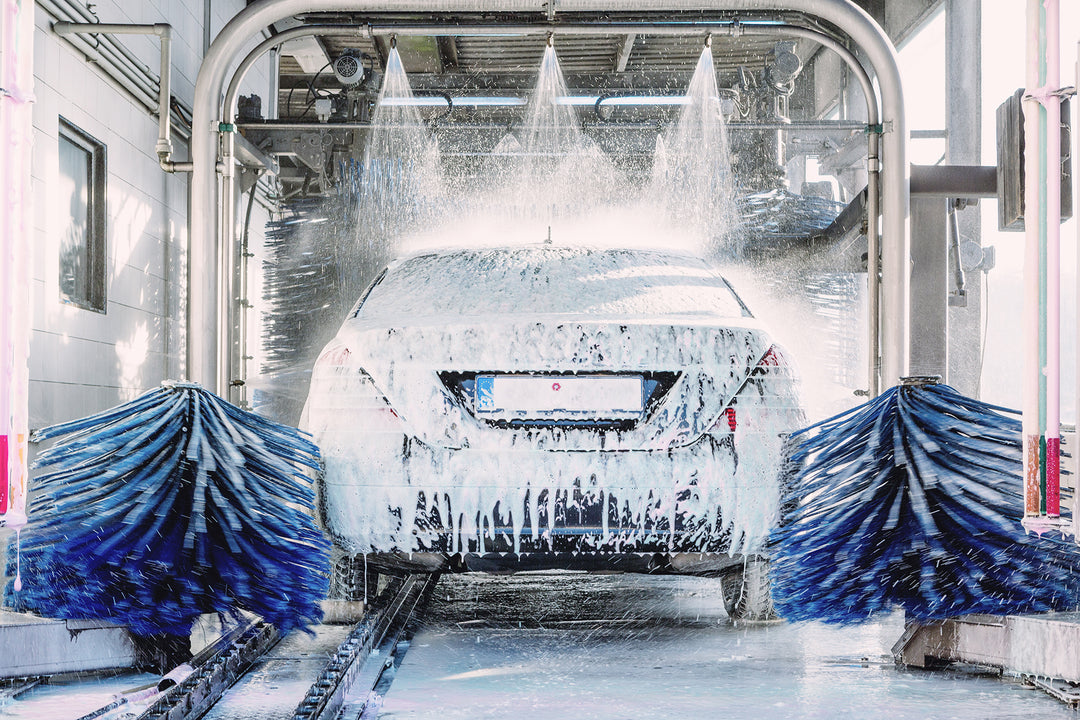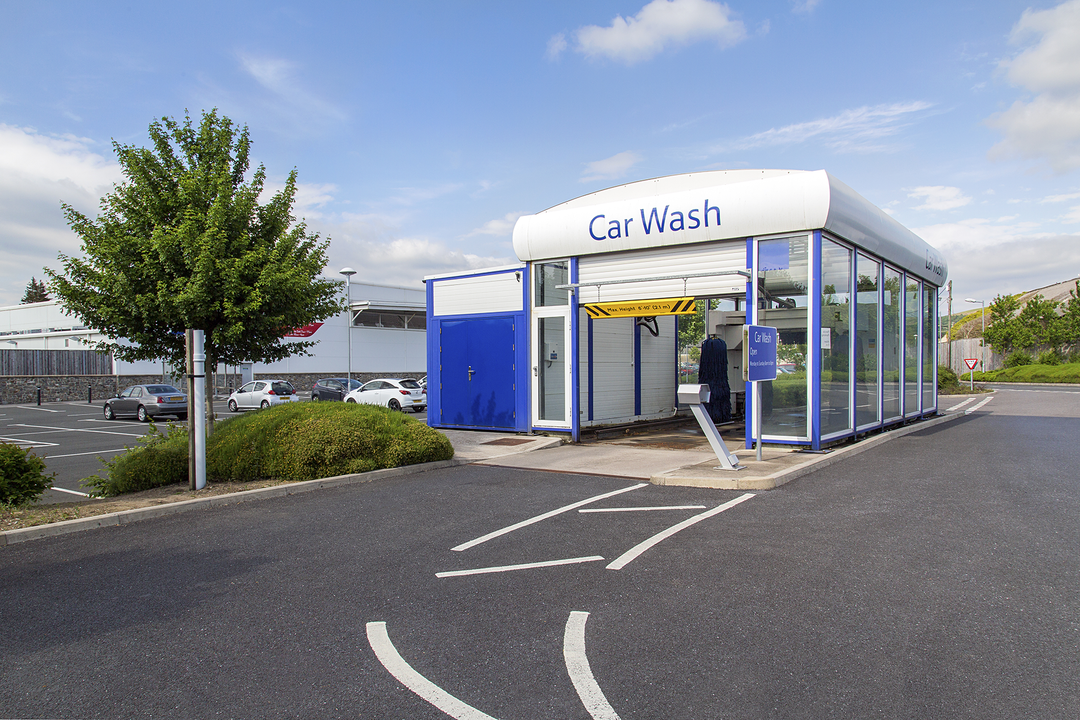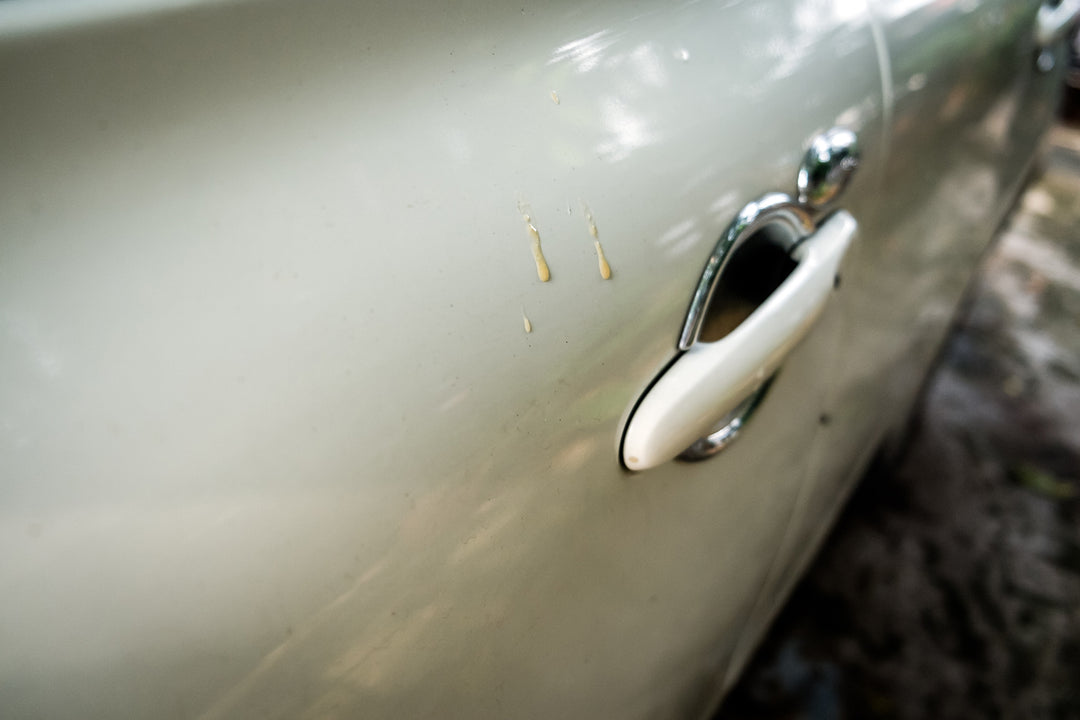How to Clay Your Car
- Posted on:


Every car enthusiast knows that a shiny, smooth car isn't just about a fresh coat of paint. Over time, our cars are exposed to various contaminants like road grime, brake dust, and air pollutants that can stick to the paint. This is where the clay bar comes in.
Clay bar treatment in the auto industry is a deep-cleaning process. Clay bars remove scratches and marks that sits on top of your vehicle clear coat, giving your car a smooth finish and ensuring that waxes and sealants work effectively. Not only does it enhance the appearance of your vehicle, but it also protects the paintwork. Before diving into the process, let's understand the tools and techniques that make clay bars so effective.
When to Clay Your Car

Clay bar is a fantastic way to deep-clean your car's paint, but how do you know when it's time to give your vehicle clay bar treatment? Here are some signs and situations that indicate it might be time to reach for that clay bar:
Rough Spots:

Run your fingers over a clean section of your car's paint. If painted surfaces feel rough or gritty, even after a car wash, it's a sign that contaminants have bonded to the surface. Clay bar treatment can help remove these and restore a smooth finish.
Visible Contaminants:
Over time, tiny metal particles, often from brake dust, rail dust, or industrial fallout, can embed themselves into the car paint. These might appear as tiny rust-colored specks, especially on white or light-colored cars. According to Fortador, Clay bars are often used to remove contaminants like rail dust, loose debris, bug residue, and rough spots from the clear coat of a car's paint
Before Applying a Protective Layer:
If you're planning to apply a new coat of wax, sealant, or ceramic coating, clay bar treatment beforehand ensures a clean, contaminant-free surface. A traditional clay bar allows the protective product to bond better and last longer.
Water Beading:

After a rain or an automatic car wash, if water isn't beading up well on your car's surface, it might be an indication that contaminants are affecting the paint's hydrophobic properties. A clay bar can restore this.
Frequent Exposure to Elements:
If you park your car outdoors regularly, especially in industrial areas or near train tracks, it's more likely to accumulate contaminants. Use a clay bar on your car at least twice a year in such cases.
After a Long Winter:

Road salt, grime, and other winter-related contaminants can take a toll on your car's paint. As spring arrives, it's a good idea to clay your car as the clay bar removes these winter remnants.
Before a Special Event:
If you're showcasing your car at an event or simply want it to look its best for a special occasion, a clay bar can give it that extra shine and smoothness.
Tools Required to Use a Clay Bar

Specific tools are required to use a clay bar to ensure the process is effective and safe for your vehicle's paint. Here's a breakdown of the essential tools:
Types of Clay Bars and Clay Bar Alternatives:

Traditional Clay Bar:
These are the most common type and come in different grades, from fine grade bars to aggressive. They're perfect for most cars, especially if you're using a clay bar for the first time.
Synthetic Clay Mitts and Pads:
These are newer alternatives to traditional clay bars. They can be attached to polishers or used by hand and are often more durable.
Importance of Clay Lube and Types Available:

Lubricants are crucial when clay barring. They reduce friction, ensuring the clay glides smoothly over the paint and preventing any scratches. There are dedicated clay lubricants, but some detailers also use a mix of water and car shampoo.
Microfiber Towels: Purpose and Selection:

After the clay bar, you must wipe off the excess lubricant and any contaminants lifted by the clay. A Microfiber towel is perfect for this, as it is soft and won't scratch the paint. They're also great for buffing the car to shine afterward.
Step-by-Step Guide to Clay Bar Your Car

Using clay bars might seem intimidating if you've never done it before, but with the right tools and a bit of patience, it's a process that can yield fantastic results. Here's a simple guide to help you clay your car effectively:
Preparation for Clay Bar:
Start by the car wash to remove any loose dirt or embedded contaminants. A good car shampoo can help ensure the surface is as clean as possible.
Dry your car completely using a microfiber towel or a car dryer.
Choose Your Clay Bar Kit:
If your car has never been clay barred or it's been a long time, consider starting with a fine grade clay bar. For cars with more contaminants, a medium grade clay bar might be more suitable.
Use Detailing Spray for Surface Lubrication :
Use a spray bottle to spray a generous amount of clay lubricant on a small section of the car's surface. It's best to work in sections, like half a door or a quarter of the hood, to ensure the clay lubricant doesn't dry out.
Use Clay Bar on the Clean Surface:
Apply clay to the lubricated area using a clay mitt or clay bar. You'll feel resistance at first, but clay bars will move more smoothly as contaminants are lifted.
Fold and knead the clay bar regularly to expose a clean surface and ensure you're not rubbing contaminants back onto the car.
Wipe and Check the Clay Bar:
After claying a section, wipe it down with a clean microfiber towel. Feel the paint with your hand; it should be smooth and free of bumps. If not, repeat the clay bar process for that section.
Finish Up Detailing Clay Bar:
Once you've clay barred the entire car, give it another wash to remove contaminants or any residual lubricant. Consider applying a wax or sealant afterward to protect the freshly cleaned paint and enhance the shine.
Remember, clay bar is about patience and attention to detail. Take your time, and you'll be rewarded with a car that looks and feels like new.
Maintenance After Clay Barring

Clay Bars do wonders for your car's paint, leaving it smooth and free from contaminants. However, after detailing clay, it is crucial to ensure that the pristine condition of your vehicle is maintained. Here's how you can take care of your car after a thorough clay barring session:
Apply a Protective Seal:
After detailing the clay bar, your car's paint is in its purest form, making it the perfect time to apply a protective layer. Consider using a quality wax or sealant to shield the paint from contaminants and UV rays. This will also enhance the shine and make future detailing clay easier.
Regular Washing:
Stick to a routine car wash schedule using gentle car shampoo. This will help remove contaminants before they have a chance to bond to the paint again. Check out the Detailing Expressing Wash and Dry Collection.
Use Quick Auto Detailers:
In between washes, consider using a quick auto detailing clay, as the clay bar removes light dust, fingerprints, tree sap, and bird droppings. It's a great way to maintain the shine and protect the paint.
Avoid Parking in Polluted Areas:

If possible, try to avoid parking your car in areas with high industrial pollution or near construction sites. These places can expose your vehicle to contaminants that can quickly bond to the paint.
Shelter Your Car:
Whenever possible, park your car in a garage or under a carport. This will protect it from direct sunlight, rain, tree sap, and bird droppings, all of which can affect the paint over time.
Reassess Periodically:
Every few months, do the "smoothness test" by running your fingers over the paint. If it starts to feel rough again, it might be time for another session of detailing the clay bar.
Common Mistakes to Avoid When Claying

Clay bar kits can transform the look and feel of your car's paint, but it's essential to properly clay bar. Here are some common mistakes to watch out for and how to avoid them:
Not Using Enough Spray Lubricant:

The lubricant spray ensures the clay glides smoothly over the paint, reducing the risk of light scratches. Always keep the surface well-lubricated.
Using a Dirty Clay Bar:
If your clay bar picks up a lot of dirt or falls on the ground, it can scratch the paint. Always fold and knead the clay bar to expose a clean, smooth surface. If it's too dirty, it's time for a new clay bar.
Use a Clay Bar in Direct Sunlight:
The sun can cause the lubricant to evaporate quickly, making the smooth surface sticky and increasing the risk of scratches. It's best to apply clay bars in the shade or indoors.
Skipping a Car Wash Before Claying:
Detailing clay on a dirty car can drag loose contaminants across the paint, leading to scratches. Always start with a thorough car wash using quality car shampoo.
Not Checking Your Work:
After using a clay bar, always feel the paint job. If it's not smooth, you might need to use a clay bar again. Ensuring each section is perfectly smooth will give the best results.
Forgetting to Protect the Paint After Clay Bar:

Clay bars strip away any existing wax, ceramic coating, or paint sealant. After the clay bar, it's essential to protect the paint with a clear coat of wax or paint sealant to keep it looking great and protected from the elements.
By avoiding these common mistakes, you'll ensure that your car's paint remains in top condition and looks completely clean after detailing the clay bar.
Comparing Clay Bars to Other Decontamination Methods

The world of car detailing offers various methods to decontaminate and cleanse a vehicle's paint. While clay bars are a popular choice, there are other techniques and products that detailers use. But before diving into the comparison, if you've ever wondered about the factors that influence the cost of detailing, check out our comprehensive guide on the top 10 factors that influence the cost of detailing a car. Now, let's compare clay bars with some of these alternatives:
Clay Bars:
- Pros: Effective at removing embedded contaminants, versatile (comes in various grades), and provides immediate tactile feedback (you can feel the paint getting smoother).
- Cons: Can be abrasive if clay picking is not used correctly, requires regular kneading, and can be rendered useless if dropped on the ground.
- Best For: Regular maintenance and deep cleaning before applying protective coatings.
Iron Removers:

- Pros: Specifically designed to dissolve iron particles, easy spray-on and rinse-off application, and less manual work compared to claying.
- Cons: Smells like chemical guys, might not remove non-iron contaminants, and can be more expensive.
- Best For: Cars exposed to brake dust or those parked near train tracks.
Tar Removers:

- Pros: Effective against road tar, adhesive residues, and rubber marks, easy to apply, and works quickly.
- Cons: Specialized use (not a general decontaminant) and might require multiple applications for heavy contamination.
- Best For: Vehicles frequently driven on freshly paved roads or those with sticky residues.
Fallout Removers:

- Pros: Targets environmental fallout and industrial pollutants, changes color when reacting with contaminants, and is easy to apply.
- Cons: Chemical smell and might require agitation for heavy contamination.
- Best For: Cars in industrial areas or cities with high pollution.
Synthetic Clay Mitts/Pads:

- Pros: Durable and long-lasting paint correction, can be used with machine polishers, and covers larger areas faster than traditional clay bars.
- Cons: Initial cost is higher and might not fit into tight spaces or circular shapes as easily as clay bars.
- Best For: Professional detailers or those looking for a faster decontamination method.
While clay bars are a tried-and-true method for paint decontamination, there are several other effective methods available. The best choice often depends on the type of contaminants you're dealing with, your budget, and personal preference. For those interested in diving deeper into the intricacies of surface treatments, a comprehensive study can be found in this research paper from the University of Washington.
Summarizing
Clay bar is a game-changer in the world of car detailing. It's the secret behind that ultra-smooth finish and deep shine that makes cars look brand new cars. Over time, environmental factors and daily driving expose our vehicles to contaminants that dull their appearance.
Claying effectively addresses these issues, rejuvenating the car's paint and preparing it for further protective treatments. While the process might seem a bit daunting at first, with the right tools and techniques, anyone can achieve professional results.
Remember, it's all about patience, attention to detail, and using a fine-grade bar. Whether you're a DIY enthusiast or considering getting your car clay bar at a professional shop, understanding the process can make a world of difference. For all your clay bar kit needs, from lubricants to clay bars and car shampoo, Detailing Express is here to help. Drive with pride, and let your car shine and feel smooth!





